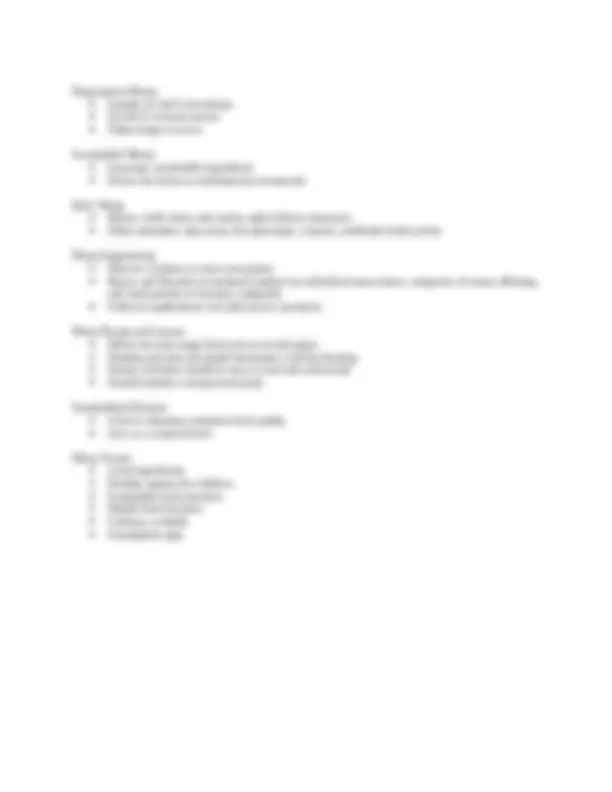



Study with the several resources on Docsity

Earn points by helping other students or get them with a premium plan


Prepare for your exams
Study with the several resources on Docsity

Earn points to download
Earn points by helping other students or get them with a premium plan
Community
Ask the community for help and clear up your study doubts
Discover the best universities in your country according to Docsity users
Free resources
Download our free guides on studying techniques, anxiety management strategies, and thesis advice from Docsity tutors
Menus are the heart of the restaurant.
Typology: Lecture notes
1 / 3

This page cannot be seen from the preview
Don't miss anything!


Chapter 4 Notes: The Menu Capability Capability to produce the quality and quantity of food necessary Standardized recipes ensures consistency Equipment Capacity and Layout Equipment must be installed in an efficient layout o Systematic flow of items from receiving clerk to guests o Critical to operational efficiency Avoid overuse, may slow service Availability of Ingredients Constant, reliable source of supply at a reliable price must be established Take advantage of seasonal items Factors in Building Price-Value Amount of product Quality of product Reliability of product Uniqueness of product Product options or choices Service convenience Comfort level Reliability of service Tie-in offers or freebies Menu Items Selected to complement the restaurant image Must be appealing to target market Menu Pricing Comparative approach: analyze competition’s prices Ratio method: price individual item and multiply by ratio amount necessary to achieve desired food-cost percentage o May lead to weighted average approach Food Cost Reflected in pricing Varies with sales Provides a simple target for which to aim Barometer of restaurant’s profitability Inventory Time-consuming Complicated Contribution Margin Difference between sales price and cost of item
Amount left over goes towards covering fixed and variable costs Nutritional Value Vegetarian: person who eats no meat or fish Vegan: person who eats no animal or dairy products at all Gluten-free: for people who cannot process a particular protein Guests are becoming increasingly concerned about the nutritional value of food Demand for healthier items, change in cooking methods, changes in type of cooking oil Allergies Up to 50 million Americans have an allergy which causes various reactions Menu Accuracy Restaurants must be accurate and truthful when describing dishes Can be heavily fined for violations of accuracy in menu Menu-labeling calorie count requirement Menu Items Local ingredients for sustainability Depend on type of restaurant Appetizers and Soups 6 to 8 appetizers are adequate Salads The preferred start in a growing number of restaurants Entrees There should be at least eight entrees Different cooking methods Categories: meat, poultry, seafood, and fish Desserts May include a selection of fruits, pies, cakes, ices, and pastries Menu Types Dinner-house: separate similar entrees Á la carte: individually priced items Table d’hôte: selection of several dishes from which patrons make a complete meal at a fixed price Du jour menu: lists items served only on a particular day Cyclical: generally used in institutions, repeats every few days California: order any menu item at any time of day Tourist: used to attract tourists Degustation: sample of the chef’s best dishes Lunch and Dinner Menus Lunch menus are easy to read and food is produced quickly Dinner menu portions and prices tend to be larger